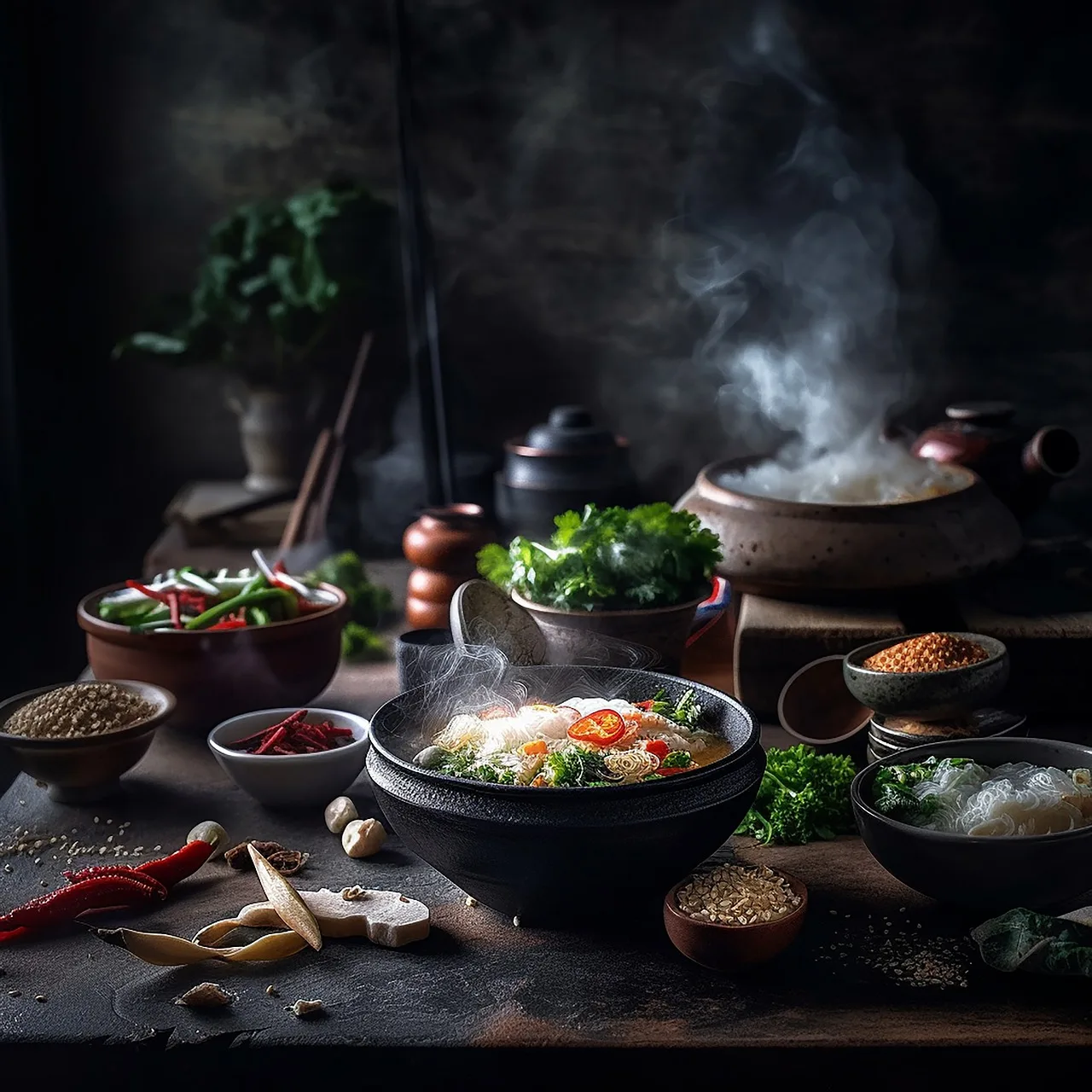Japan's Culinary Heritage
Japan's Culinary Heritage. Take a Journey Through Taste and Tradition
Japan’s culinary heritage offers a rich and rewarding journey through flavours, textures, and cultural traditions. From the bustling streets of Tokyo to the peaceful countryside of Kyoto, food in Japan reflects a deep respect for nature, seasonality, and craftsmanship. Every dish tells a story, shaped by centuries of practice and a commitment to harmony.
The Philosophy of Harmony in Japanese Cuisine
At the heart of Japan's culinary heritage lies the concept of wa, meaning harmony. This principle guides the preparation and presentation of food, ensuring balance in flavour, colour, and texture. Whether served in a fine dining setting or a family kitchen, Japanese dishes aim to create a sense of unity between ingredients and the environment.
Careful attention is given to how each component complements the others. Meals often include a variety of small dishes, each offering a different taste and texture. This approach encourages mindfulness and appreciation, turning every meal into a thoughtful experience.
Seasonality plays a key role in this philosophy. Ingredients are chosen not only for their freshness but also for their connection to the time of year. This seasonal awareness strengthens the bond between food and nature, making each dish a reflection of the moment.
Rice: The Foundation of Japanese Cuisine
Rice holds a central place in Japan’s culinary heritage. It serves as the base for countless traditional dishes and remains a symbol of nourishment and cultural identity. From steamed white rice to fried variations and fermented forms like sake, rice is deeply woven into daily life and ceremonial practices.
The cultivation of rice reflects a strong connection to the land and its rhythms. Farmers work in harmony with the seasons, planting and harvesting according to natural cycles. This respect for nature is mirrored in the kitchen, where rice is prepared with care and served with pride.
Different regions in Japan produce distinct varieties of rice, each with its own flavour and texture. These regional differences add depth to the culinary landscape and highlight the diversity within Japanese food culture.
Freshness and Seasonality
Japanese cuisine places great emphasis on fresh, seasonal ingredients. Chefs source produce, seafood, and meats from local farms and coastal waters, ensuring that each dish showcases the natural qualities of its components.
In Hokkaido, cold waters yield rich seafood, while Kyushu’s fertile fields provide crisp vegetables. These ingredients are often prepared simply, allowing their flavours to shine. This approach not only enhances taste but also fosters a deeper connection to the land and its offerings.
Markets across Japan reflect this seasonal focus. Shoppers select ingredients based on what is currently available, creating meals that align with the time of year. This practice supports local producers and reinforces the importance of sustainability in food culture.
Sushi: A Global Icon of Japanese Craftsmanship
Sushi stands as one of the most recognisable elements of Japan’s culinary heritage. Originally developed as a method for preserving fish in fermented rice, sushi has evolved into a refined art form. Today, it includes a variety of styles, such as nigiri, sashimi, and maki rolls, each requiring precision and skill.
Sushi chefs train for years to master their craft. They learn to select the best fish, prepare rice with the right balance of vinegar, and present each piece with elegance. This dedication reflects the broader values of Japanese cuisine, respect, discipline, and attention to detail.
While sushi is often associated with high-end dining, it is also enjoyed in casual settings. Conveyor belt sushi restaurants and takeaway shops make it accessible to everyone, allowing more people to experience its unique flavours and textures.
The Comfort of Japanese Noodles
Japan’s culinary heritage extends far beyond sushi. Noodle dishes such as ramen, udon, and soba offer comfort and variety, each with its own distinct character. Ramen features wheat noodles in rich broths, udon provides a chewy texture in mild soups, and soba offers a nutty flavour from buckwheat flour.
These noodles are often served in broths flavoured with soy sauce, miso, or dashi, a savoury stock made from seaweed and fish. Toppings vary by region and season, adding further depth to the dish.
Noodle shops are common throughout Japan, offering quick, satisfying meals for people on the go. Despite their simplicity, these dishes carry cultural significance and reflect the everyday rhythms of Japanese life.
Washoku: The Traditional Japanese Meal
Washoku, meaning “Japanese food,” represents the traditional style of eating in Japan. It includes everything from elaborate kaiseki meals served in tea houses to home-cooked dishes shared among family and friends. Washoku emphasises balance, simplicity, and seasonal ingredients.
A typical washoku meal features rice, soup, and several side dishes. Each component is chosen to complement the others, creating a harmonious dining experience. Presentation is also important, with attention given to colour, shape, and arrangement.
In 2013, UNESCO recognised washoku as an Intangible Cultural Heritage, acknowledging its role in promoting health, sustainability, and cultural identity. This recognition highlights the importance of preserving traditional food practices and sharing them with future generations.
Japan’s Culinary Heritage in a Global Context
As Japan continues to engage with the world, its culinary heritage remains a source of pride and inspiration. Chefs across the globe draw from Japanese techniques and philosophies, incorporating them into diverse culinary traditions.
Japanese ingredients such as miso, soy sauce, and matcha have found their way into international kitchens. Cooking methods like fermentation and knife skills are studied and admired. This global interest reflects the universal appeal of Japan’s approach to food.
Despite modern influences, Japan maintains a strong connection to its culinary roots. Traditional dishes are still prepared and enjoyed, and new interpretations continue to emerge. This balance between preservation and innovation keeps Japan’s food culture vibrant and relevant.
Final Reflections on Japan’s Culinary Heritage
Japan’s culinary heritage offers more than delicious meals. It provides a window into the country’s values, history, and relationship with nature. From the harmony of wa to the artistry of sushi and the comfort of noodles, each dish carries meaning and tradition.
Exploring Japanese cuisine is a journey through time, taste, and culture. It invites curiosity, encourages mindfulness, and celebrates the beauty of simplicity. Whether you’re dining in a quiet countryside inn or a lively city restaurant, the experience is sure to leave a lasting impression.
Japan’s food culture continues to evolve, yet its foundations remain strong. With every bite, you become part of a story that spans generations and honours the land, the seasons, and the people who bring it all together.

